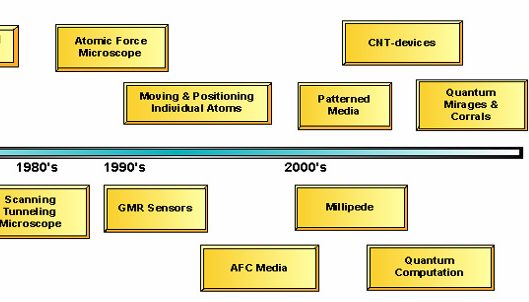
A nanometer is one billionth of a metre or a millionth of a millimetre. It is very very small.
The reason nanotechnology is important in the world of computing is the information. We will reach the limits for pushing electrons around on silicon are data carriers.
The lower end of the current technology scale can be found in production at Intel where processors are fabricated at nanometre scale. The latest tiny measurement to be reached is the 14 nanometre chip which began production in 2014. See this video for a top level how and why.
More processing, less active power, we can get by with fewer of them. Improved performance.
Over at IBM it says it is investing $3bn in nanometre technology, announced in 2014. The money was targeted at "broad research and early stage development programs to push the limits of chip technology needed to meet the emerging demands of cloud computing and Big Data systems. These investments will push IBM’s semiconductor innovations."
There is a timeline infographic here
IBM also has an amazing set of introductory research papers
See next page for a great nanotechnology definition
Nanotech defintion by Dr. Thomas Theis, Director of Physical Sciences at IBM Research
When it comes to matter, size matters. The properties of materials that we notice – color, hardness, conductivity, and so on — all depend on the nature and structure of the constituent atoms and molecules. With increasing ability to design and build on an atomic and molecular scale — a reasonable definition of "nanotechnology" — we are becoming better and better at developing materials with entirely new properties. Those materials, in turn, become the building blocks for more complex systems and entirely new products.
But when an emerging technology is the subject of as much hype as nanotech, it’s easy to tune out and stop listening. That would be a big mistake. There are solid reasons to expect significant long-term developments in what the National Science Foundation estimates to be a trillion-dollar plus industry over the next 10 to 15 years.
Why nanotech? With it, today’s supercomputer could become tomorrow’s wristwatch personal assistant. Buildings and machines could signal when they need maintenance, and perhaps repair themselves. Our clothing could monitor our health and alert us to environmental hazards. All of these wonders, and many more, are scientifically possible. The difficulty comes in figuring out how and when these things will happen






